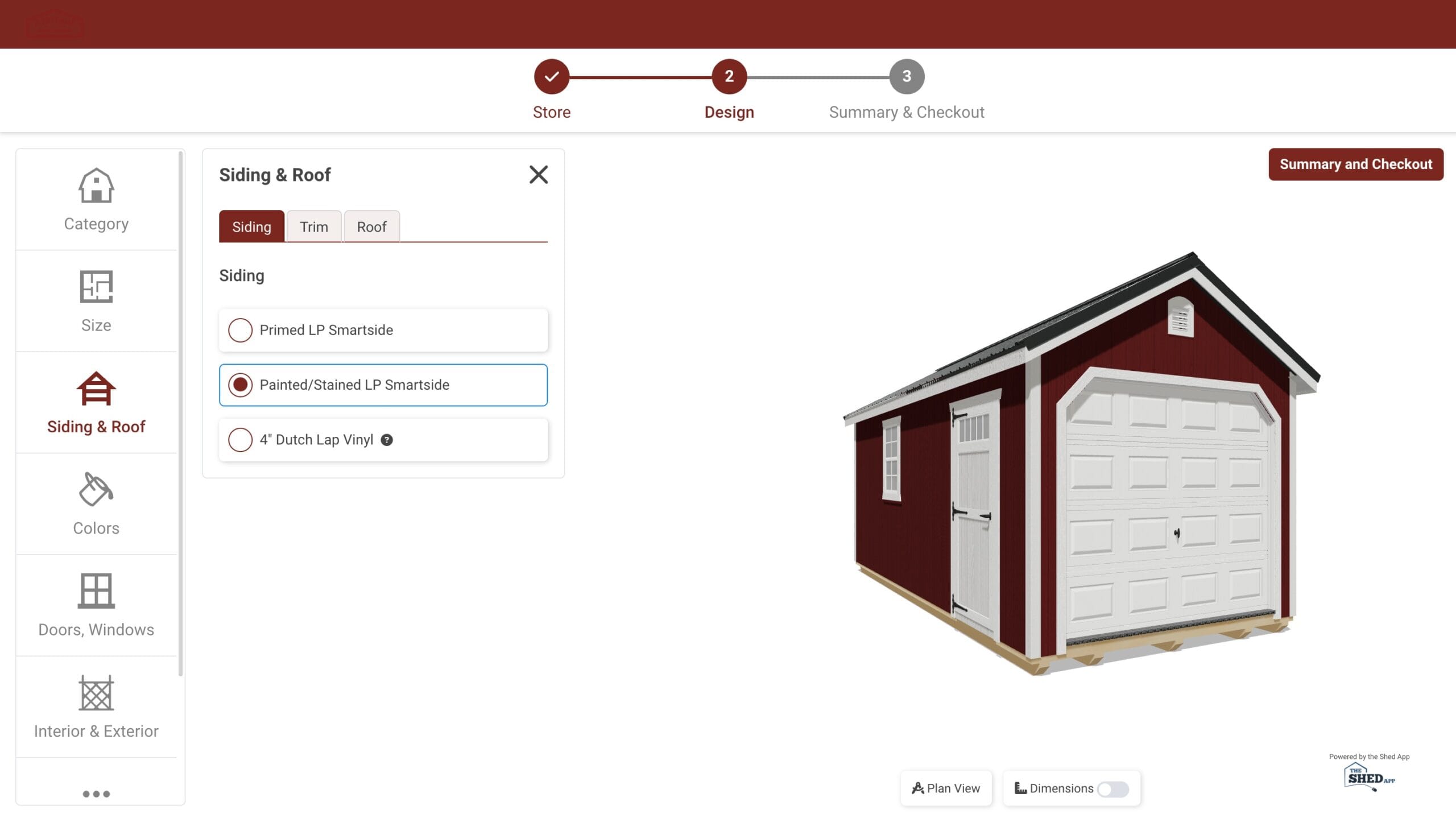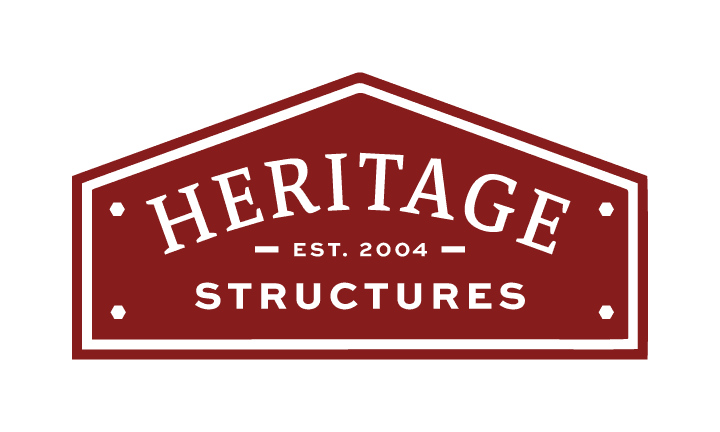Installing a new shed is an exciting step for any property owner. Whether you’re creating a dedicated space for storage, a hobby area, or a backyard workspace, it all begins with one critical step: site preparation. Unfortunately, this is also the stage where many homeowners unknowingly make mistakes that can cause costly delays.
At Heritage Structures, we’ve seen firsthand how proper preparation ensures a smooth and successful installation. When done right, your shed not only lasts longer but performs better over time. To help you avoid unnecessary setbacks, we’re diving into the most common site prep mistakes and how you can sidestep them.
Let’s get started so your shed project stays on track and stress-free.
Why Site Preparation Matters More Than You Think
Before we jump into the common mistakes, let’s take a quick look at why proper site preparation is so important.
Structural Integrity: A solid foundation keeps your shed level, preventing sagging, shifting, or warping over time.
Drainage and Moisture Control: Good site prep protects your investment from water damage, mold, and rot.
Installation Efficiency: When the site is ready, our team can deliver and set up your shed quickly and safely.
Longevity of Your Shed: Proper prep can significantly extend the life of your structure.
Without a stable, well-planned site, even the highest quality sheds—like those from Heritage Structures—can face challenges. Now, let’s explore the biggest mistakes we see homeowners make.
1. Choosing the Wrong Site Location
It’s easy to assume that any level spot in your yard is a good place for a shed. But picking the wrong location can lead to long-term problems.
Common Location Mistakes:
Low-lying areas prone to flooding
Sites too close to trees with invasive roots
Locations with limited access for delivery equipment
Ignoring local building codes or setback requirements
How to Avoid This:
Take time to walk your property and evaluate it carefully. Look for a well-drained, flat area with good sunlight exposure and minimal obstruction from tree branches or roots. Also, make sure your chosen location meets all local zoning requirements. When in doubt, contact us for guidance.
2. Not Leveling the Ground Properly
A shed must sit on a level foundation to function properly. If the ground is uneven, the structure may lean, doors may not open correctly, and over time, it could compromise the structural integrity.
Signs of Poor Ground Leveling:
The shed rocks or wobbles after placement
Uneven spacing under the skids or base
Doors or windows don’t align properly
How to Avoid This:
Use a long carpenter’s level, string line, or laser level to ensure the entire site is even. For most sheds, a tolerance of less than an inch in variation is ideal. If you’re unsure, our team can offer recommendations or connect you with reliable site prep services.
3. Using the Wrong Base Materials
Your shed’s foundation needs more than just flattened dirt. Many homeowners make the mistake of relying solely on compacted soil or placing their shed directly on the grass.
Common Foundation Mistakes:
Using loose gravel that’s not compacted
Pouring concrete without proper formwork
Skipping a gravel base entirely
Not using pressure-treated materials for wooden bases
Best Practices:
Depending on your shed size and usage, the foundation can vary. For example:
Gravel Pad: Ideal for most portable buildings, especially with a border to contain the material
Concrete Slab: Great for heavy-duty use or if you’re planning electrical wiring or insulation
Concrete Piers: Useful for uneven terrain or when airflow under the shed is needed
At Heritage Structures, we recommend a properly installed gravel pad for most of our buildings. It’s cost-effective, quick to install, and allows excellent drainage.
4. Ignoring Drainage Needs
Water is one of your shed’s biggest enemies. Improper drainage around the site can lead to moisture buildup under your structure, which can result in rotting floors, mold, or mildew.
Common Drainage Errors:
Site is in a natural low spot
No gravel layer under the shed
No slope away from the shed base
Gutters and downspouts not accounted for
How to Ensure Proper Drainage:
Make sure the site slopes slightly away from the shed in all directions. Incorporate a gravel layer that’s several inches deep and compact it well. If you’re placing a concrete slab, install drainage channels or a slope to prevent water pooling. You may also consider French drains or swales for added protection.
5. Underestimating Access Requirements for Delivery
Many shed deliveries require a clear, straight path to the site. Homeowners often forget to factor in how the structure will be delivered and positioned.
Access-Related Issues:
Narrow gates or fences
Overhanging tree limbs or wires
Steep inclines or uneven terrain
No room for the delivery trailer or Mule machine
How to Prepare:
Walk the delivery path from the road to your shed site. Look for any potential obstructions. A minimum clearance of 12 feet wide and 14 feet high is usually recommended. If access is tight, let us know in advance. Heritage Structures uses state-of-the-art equipment like the Mule to maneuver sheds into place with precision, even in tricky locations.
6. Skipping Permits or Failing to Check Regulations
Each town or municipality has its own zoning laws, setback rules, and permit requirements. Failing to research these before site prep can bring your installation to a sudden halt.
Common Mistakes:
Not checking with your local zoning office
Starting site work without a permit
Placing a shed too close to property lines or utilities
Avoid Delays:
Always contact your local code office to ask about permits and building codes before starting any groundwork. Not only will this save you time, but it can also prevent fines or the need to move your shed after installation.
7. Overlooking Long-Term Use and Shed Size

Another common oversight is not thinking ahead. You may be prepping for a small shed now, but what if your storage needs grow?
Mistakes to Avoid:
Building a pad that’s too small for future upgrades
Not leaving space for add-ons like decks or ramps
Forgetting about future landscaping or fencing needs
Plan Ahead:
Even if you’re installing a basic storage shed today, it’s smart to future-proof your site. Level a slightly larger area than needed. Make room for walkways or possible expansion. Your future self will thank you.
8. Hiring Unqualified Contractors
If you’re not doing the prep work yourself, it’s important to choose experienced professionals. Poorly prepared sites by unqualified contractors can lead to all the issues mentioned above.
Red Flags:
No references or previous site prep work
Vague contracts or pricing
Lack of proper equipment
No warranty or follow-up
What to Look For:
Choose contractors who specialize in shed or small building foundations. Ask for photos of previous projects. Better yet, reach out to us. At Heritage Structures, we can connect you with trusted partners who meet our high standards for prep work.
Why Choose Heritage Structures?

At Heritage Structures, we’re more than just a shed provider. We are committed to helping you every step of the way—from designing your dream shed to ensuring a smooth delivery and installation process. We use premium materials, expert craftsmanship, and offer a wide variety of custom options that meet both functional needs and aesthetic preferences.
What sets us apart:
Durable, Amish-crafted sheds built to last
Friendly and knowledgeable team
Straightforward delivery with professional setup
Custom design tools to visualize your shed before purchase
We want your experience to be positive and worry-free. And it all starts with proper site prep.
Plan Confidently with Our 3D Shed Builder Tool

Not sure what size or style shed you need? Want to visualize how it will look on your property?
Use our free 3D Shed Builder Tool to design your ideal structure from the comfort of your home. Choose your size, colors, doors, windows, and more. See your shed come to life before you ever break ground. It’s the easiest way to plan ahead and make informed decisions.
Ready to Get Started? Contact Us Today
Ready to build your first shed?
Contact us today to speak with a friendly expert. We’re happy to guide you through the process and ensure your shed installation goes smoothly, from the first step to the final placement.
Let’s get your shed project off to the right start.

